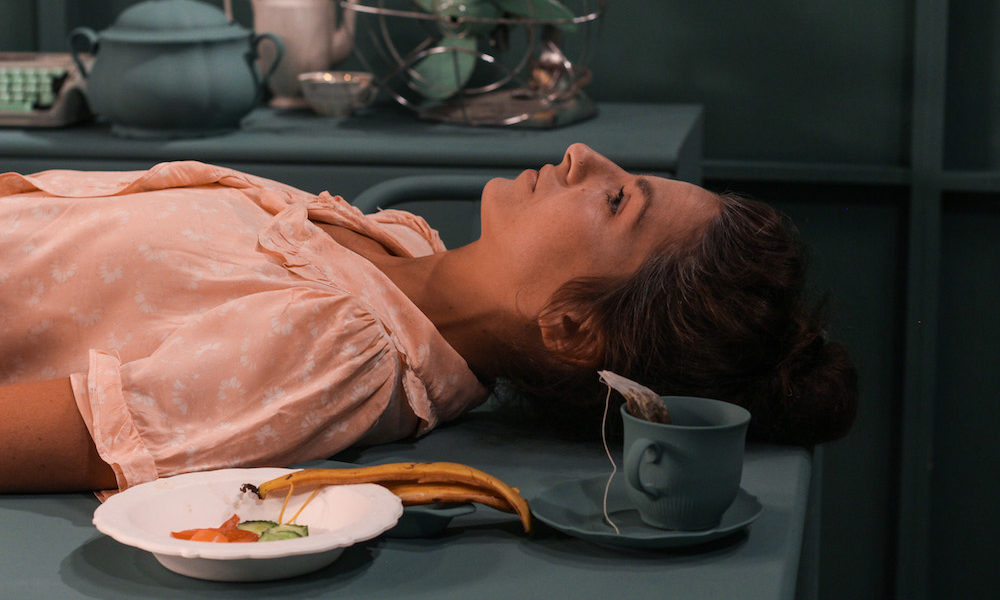THE GREAT OUTDOORS by Ori Lenkinski

This article was meant to run a few weeks ago in The Jerusalem Post but, due to the current situation, it fell between the cracks. A bit more late than fashionable, here it is, following a thrilling conversation I was honored to have with two inspiring artists.
During the lockdown, choreographer, designer and visual artist Inbal Pinto sketched images of people wedged in their doorframes. While staying indoors, they had somehow grown too large to get through the openings and were thus trapped inside. When the lockdown ended, celebrated writer Etgar Keret published a story entitled Outside in which authorities have to force people out of their homes. Their time inside had made them fearful and reluctant to reenter public spaces.
Just a few blocks away from one another and with no contact, these two artists described similar states.
“I felt like a turtle, sticking his head out of the comforts of his shell,” describes Keret via Zoom. “There was this euphoria about going outside. I live next to Dizengof and when I went out, I almost got run over by three scooters.”
“For me, to create, I need to go out,” adds Pinto from the neighboring screen. “I have to go to the studio and be in interaction. During the lockdown, I didn’t know where things were going. The opera I was meant to direct was canceled. And I thought about what would happen if it took time. I sketched these people who are not sure if they want to go out.”
Shortly after Outside ran in the New York Times, Arieh Rosen, Culture and Science Affairs Attaché for the Embassy of Israel in Tokyo, contacted Pinto and Keret with an idea.
“He had this vision and said, ‘let’s do something,’” says Pinto. “He connected me to Etgar.”
A collaboration between the two artists had been on the table several times before but had never panned out.
To begin, Pinto and Keret discussed how best to adapt Outside to a film. “We wrote a lot of scripts about the inside/outside and how to give perspective on the story while not depicting it one-for-one. We wanted to show the mental state of the situation. It was clear we would work with a Japanese element as it was Arieh’s idea. We are communicating via screens so it doesn’t matter if it’s your neighbor or someone in Japan on the other end. The closeness is the same closeness,” says Pinto.
Eventually, they agreed on a cast of two; Mirai Moriyama and Moran Muller, both of whom had danced in Pinto’s creations in the past. Moriyama is the authoritarian, piped through a television screen, reading out the new rules and Muller is confined to her home in a dreamlike state, tuning in and out of Moriyama’s broadcast.
“The story is realistic but the adaptation is a fairytale: Alice in Covidland. I see the persona of mine and Inbal’s in it. Inbal is the character of Moran, powerful and innocent. And I’m the Mad Hatter, the hyperactive one,” says Keret. “We are talking about corona but it’s about loneliness and human communication. It’s two people in different places speaking different languages, from different ethnicities but with the same fate. In spite of all the gaps, we are people and we suffer together. We know what pain is, what loneliness is and what it is like to want something and not get it. It is sad and optimistic.”
Had it not been for coronavirus, this project would not have come about. Due to all of the restrictions, cancellations and emotions, Keret and Pinto found themselves embarking on a project, quite quickly, that pushed them to explore new turf. “We all did something we don’t usually do. Arieh Rosen doesn’t usually produce, Moran doesn’t usually act, I make films but don’t do dance and Inbal makes dance but doesn’t do films. It pushed us out of our comfort zones,” adds Keret.
And like their characters, Keret and Pinto found a rare connection in this strange time. “When I’m not writing, I look for collaborations. My best ones are with people with a world that is very different from my own. Together, we attempt to find a meeting point between our worlds. We speak about the world from different angles,” says Keret. “I’m ready for the next movie.”
For more on Outside, visit www.outside-film.com.
